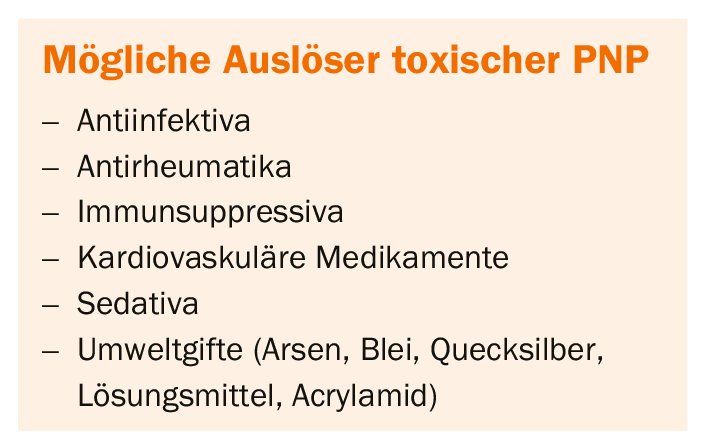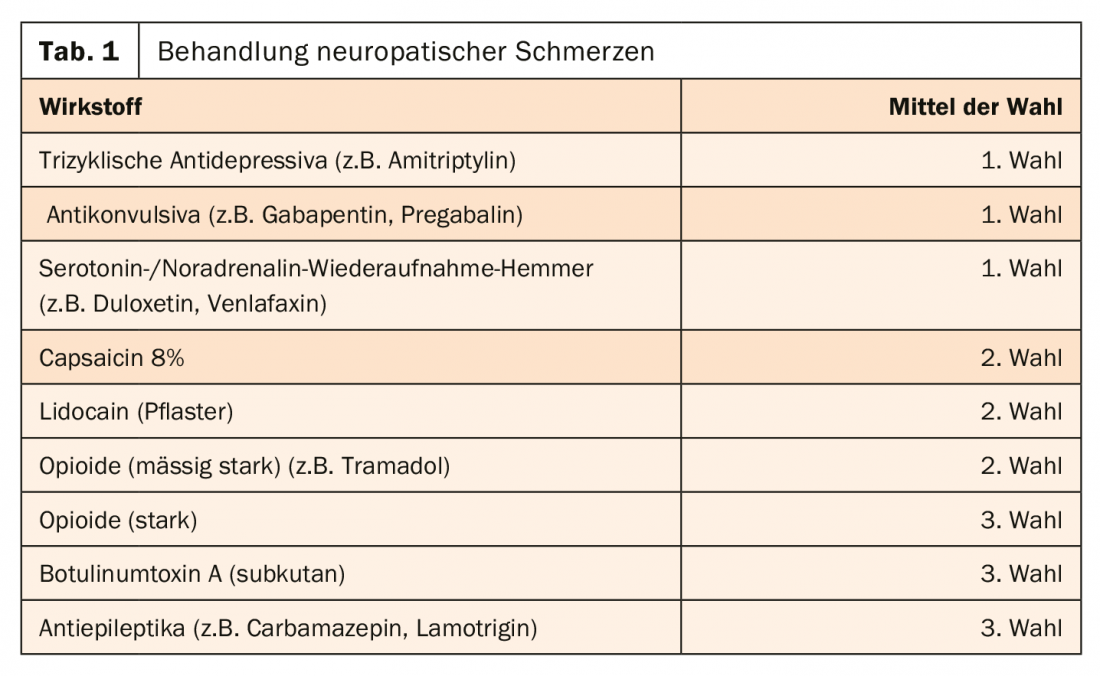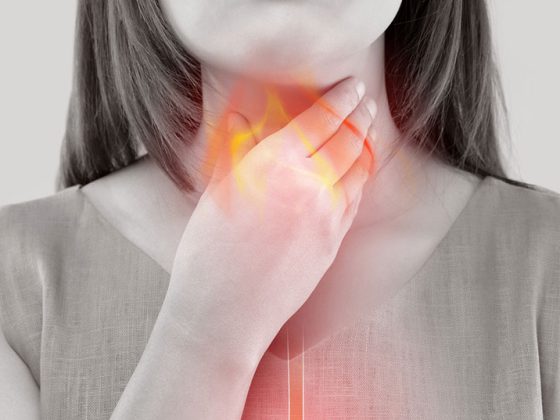Polyneuropathies are generalized disorders of the peripheral nervous system and, with a prevalence of 5-8%, are most common in patients with chronic alcohol abuse, diabetes, or malignancies. In addition to therapy of the causative disease, analgesics, antidepressants or anticonvulsants are mainly used to alleviate the symptoms.
In polyneuropathies (PNP), the motor, sensory and autonomic nerves all affect those parts of the nervous system that lie outside the central nervous system. Distal symmetric PNP is most common, starting in the legs, with a neuronal axonal length-dependent disease process as the causative factor. In addition, polyradiculoneuropathies with proximal and distal involvement or mononeuropathia multiplex with an asymmetric clinical picture may also occur. The pain that occurs in PNP is not caused by external stimuli such as inflammation or injury, but due to damaged or destroyed nerve fibers, which disrupts the transmission of stimuli. Thus, sensory stimuli are either not transmitted to the brain at all, are reduced, or are amplified. Discomfort such as tingling, burning and pain are the result.
Multiple causes, but not an independent condition
Often PNP are consequences of other diseases such as advanced diabetes. Diabetic neuropathy can be detected in nearly half of all type 2 diabetics. The increased blood sugar is held responsible, which damages the corresponding nerves. But there are other risk factors (box 1). In PNP triggered by chronic alcohol abuse, the nerves are toxically damaged. Malnutrition with regard to B vitamins, for example, does the rest. The duration of abuse as well as the lifetime amount of alcohol play a role in the development. Chemotherapy-induced neuropathies are the most common neurologic side effect of tumor therapy. As malignancies have increased, the incidence is also rising. Neurotoxicity depends on the amount of the single dose, the total cumulative dose, and the duration of chemotherapy. However, other drugs and environmental toxins can also trigger PNP (Box 2).

Diagnostics made easy thanks to revised guideline
Since last year, the revised version of the S1 guideline “Diagnostics in Polyneuropathies” is available for neurologists. A major focus has been on the newer potential triggers with the new cancer drugs, Zika virus and gene mutations. Immune checkpoint inhibitors in particular can cause neurologic side effects, such as acute inflammatory demyelinating or axonal polyneuropathy (AIDP/ASMAN/AMAN) and chronic inflammotir demyelinating polyneuropathy (CIDP). However, organ transplantation, the hepatitis E and Zika viruses, the anti-FGF3 antibody, and mutations of the SCN9A, SCN10A, SCN11A (small fiber neuropathies) genes and the GLA gene can also cause various polyneuropathies. For diagnostic purposes, history, clinical examination, electrophysiology and standard laboratory are mandatory. In addition, an expanded laboratory, CSF diagnostics, muscle/nerve/skin biopsy, genetics, and diagnostic imaging are recommended.
Consistent therapy of the underlying disease and effective symptom control
First and foremost, consistent treatment of the causative underlying disease is indicated. Well-controlled blood sugar or abstinence from alcohol can prevent further progression of nerve damage. In addition, the symptoms, first and foremost the pain, must be contained. However, the mechanisms of neuropathic pain are fundamentally different from those of nociceptive pain. Therefore, a special therapy concept is indicated. Analgesics are often not effective. The drugs of choice are primarily tricyclic antidepressants, serotonin/norepinephrine reuptake inhibitors, and anticonvulsants (Table 1).

Further reading:
- www.dgn.org/leitlinien/3754-ll-030-067-diagnostik-bei-polyneuropathien-2019 (last accessed on 06.01.2020)
- www.neurologen-und-psychiater-im-netz.org/neurologie/erkrankungen/polyneuropathie/was-ist-polyneurpathie/ (last accessed on 06.01.2020)
- www.dgn.org/leitlinien/3754-ll-030-067-diagnostik-bei-polyneuropathien-2019 (last accessed on 06.01.2020)
- Sommer C, Geber C, Young P, et al: Polyneuropathies – etiology, diagnosis, and treatment options. Dtsch Arztebl Int 2018; 115: 83-90. DOI: 10.3238/arztebl.2018.008
InFo NEUROLOGY & PSYCHIATRY 2020; 18(1): 28-29.












